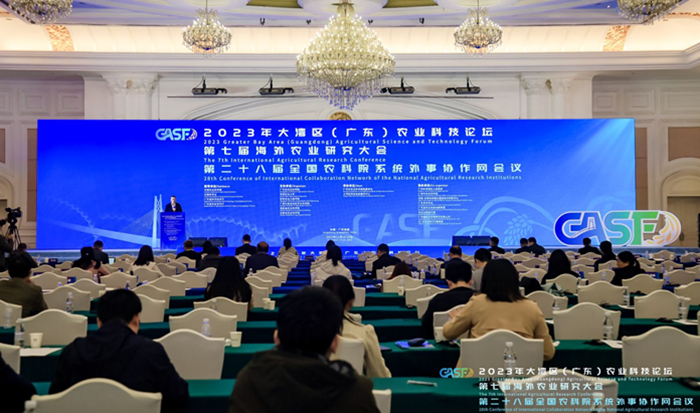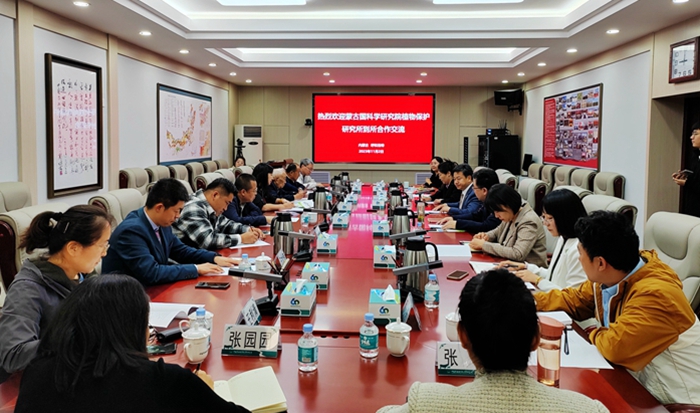Risk assessment framework for pine wilt disease: Estimating the introduction pathways and multispecies interactions among the pine wood nematode, its insect vectors, and hosts in China
A recent paper titled "Risk Assessment Framework for Pine Wilt Disease: Estimating Introduction Pathways and Multispecies Interactions Among the Pine Wood Nematode, Its Insect Vectors, and Hosts in China" has been published online in the journal Science of the Total Environment. This study, led by Prof. Liu Wanxue and his research team from the Institute of Plant Protection, Chinese Academy of Agricultural Sciences (IPPCAAS), developed a comprehensive risk assessment framework for pine wood nematode (PWN), evaluating the risks associated with the introduction, establishment, and dispersal of PWN.
Pine wilt disease (PWD), caused by the pine wood nematode (PWN, Bursaphelenchus xylophilus), one of the most destructive invasive alien species in pine forests, is resulting in significant global economic losses. Previous studies on the risk assessment and management of PWD typically focused on specific stages of the invasion process, while this study integrates network analysis, species distribution models, and niche concepts into an invasion risk assessment framework for PWD, taking into account the introduction pathways and multispecies interactions involving the PWN, hosts, and insect vectors. Its results reveal multiple pathways for the introduction of PWN into China, with climate change exacerbating the threat to hosts and increasing the dispersal capacity of insect vectors.
In conclusion, this research holds the potential to significantly contribute to preventing the entry of PWN, as well as mitigating their establishment and dispersal risks. It offers valuable insights for developing a framework to enhance the global risk assessment and surveillance of biological invasions.
PhD student Zhao Haoxiang and Associate Prof. Xian Xiaoqing from IPPCAAS are co-first authors of the paper. Prof. Liu Wanxue from IPPCAAS and Prof. Shi Juan from Beijing Forestry University are the co-corresponding authors of the paper. Prof. Yang Nianwan, Associate Prof. Guo Jianyang from IPPCAAS, and Prof. Zhao Lilin from the Institute of Zoology, Chinese Academy of Sciences, contributed to this research. The study received support from the National Key Research and Development Program of China and the Innovation Program of Chinese Academy of Agricultural Sciences.

Fig. 1 Risk assessment framework for pine wilt disease

Fig. 2 Trends in suitable probability of pine wood nematode and its two insect vectors
-
 Nov 24, 2023The 2nd Belt and Road International Nematology Symposium successfully held in Xi'an
Nov 24, 2023The 2nd Belt and Road International Nematology Symposium successfully held in Xi'an -
 Nov 24, 2023The 7th International Agricultural Research Conference Successfully Held in Guangzhou
Nov 24, 2023The 7th International Agricultural Research Conference Successfully Held in Guangzhou -
 Nov 21, 2023International Symposium on Sustainable Development of Natural Fibers Held in Hunan
Nov 21, 2023International Symposium on Sustainable Development of Natural Fibers Held in Hunan -
 Nov 21, 2023Institute of Grassland Research of CAAS promoted comprehensive cooperation with Institute of Plant Protection Research, Mongolia
Nov 21, 2023Institute of Grassland Research of CAAS promoted comprehensive cooperation with Institute of Plant Protection Research, Mongolia -
 Nov 09, 2023CAAS President Meets with IFPRI Director General
Nov 09, 2023CAAS President Meets with IFPRI Director General
